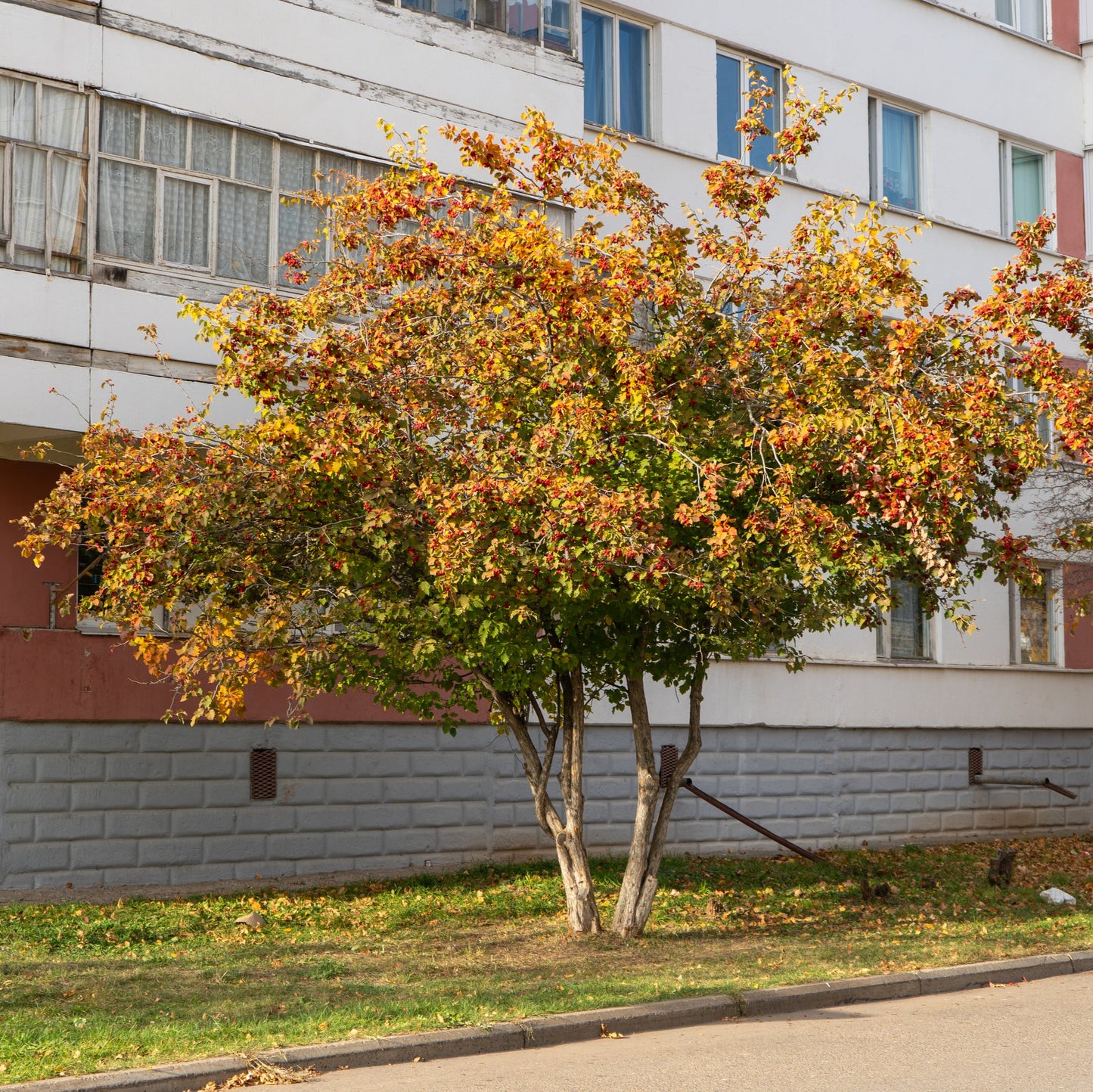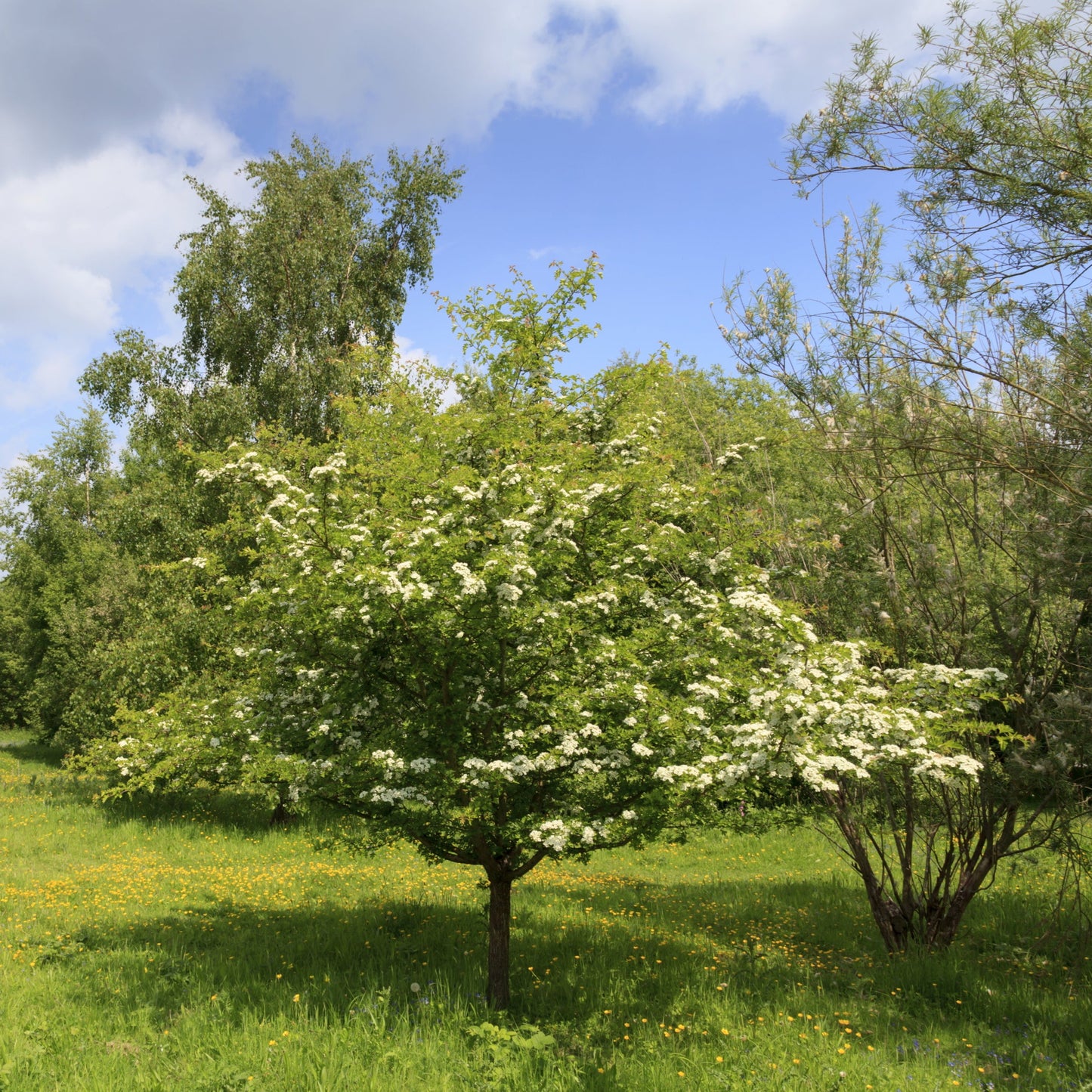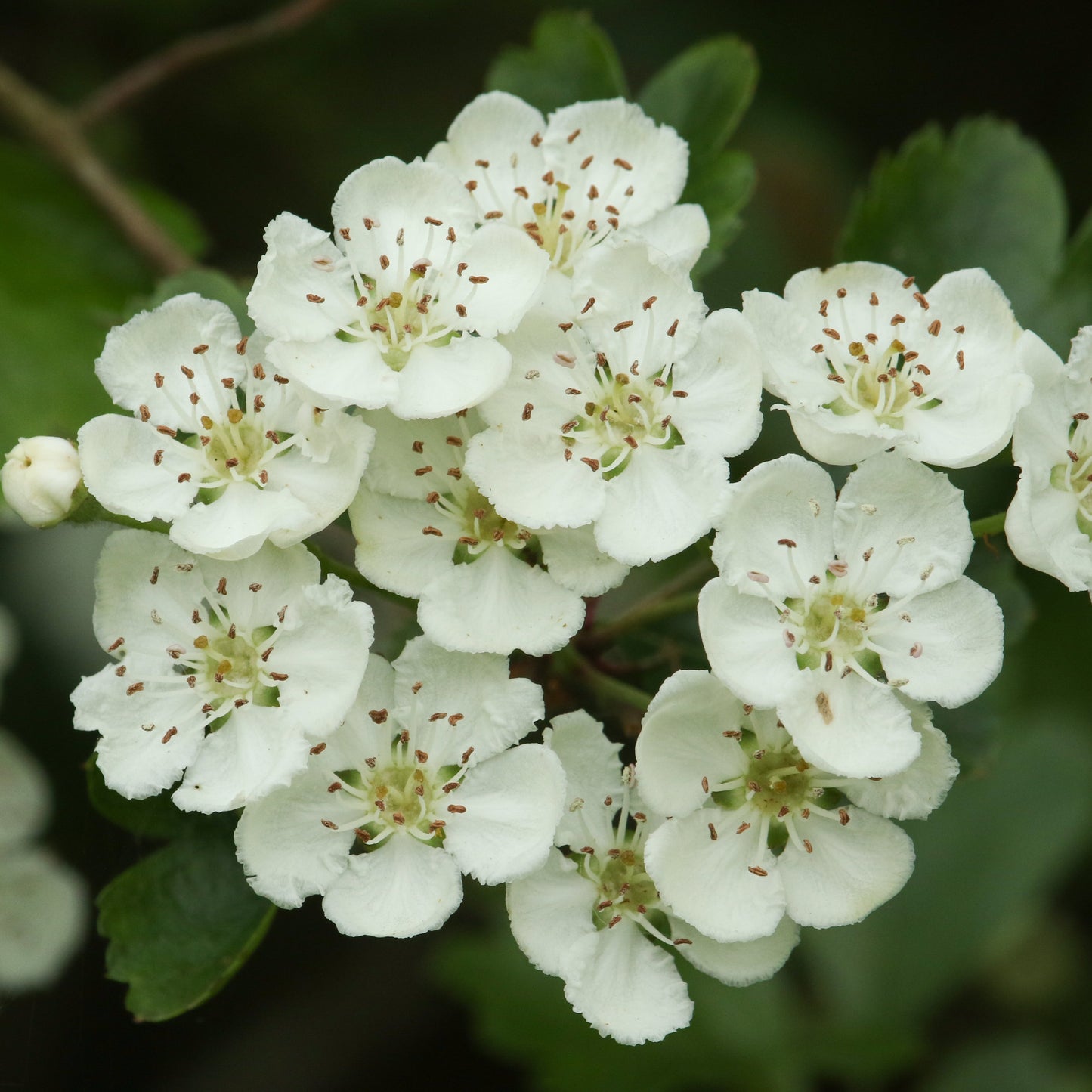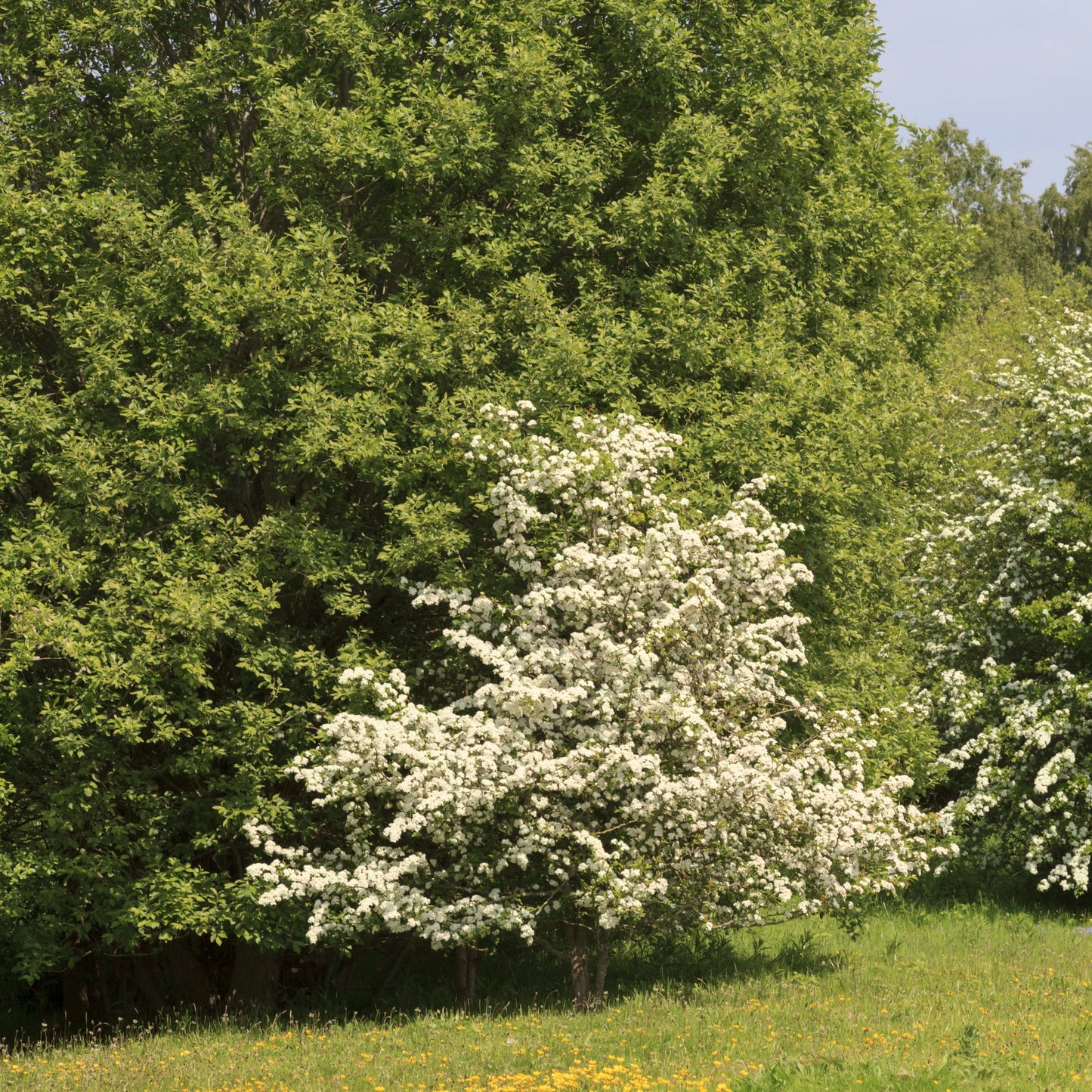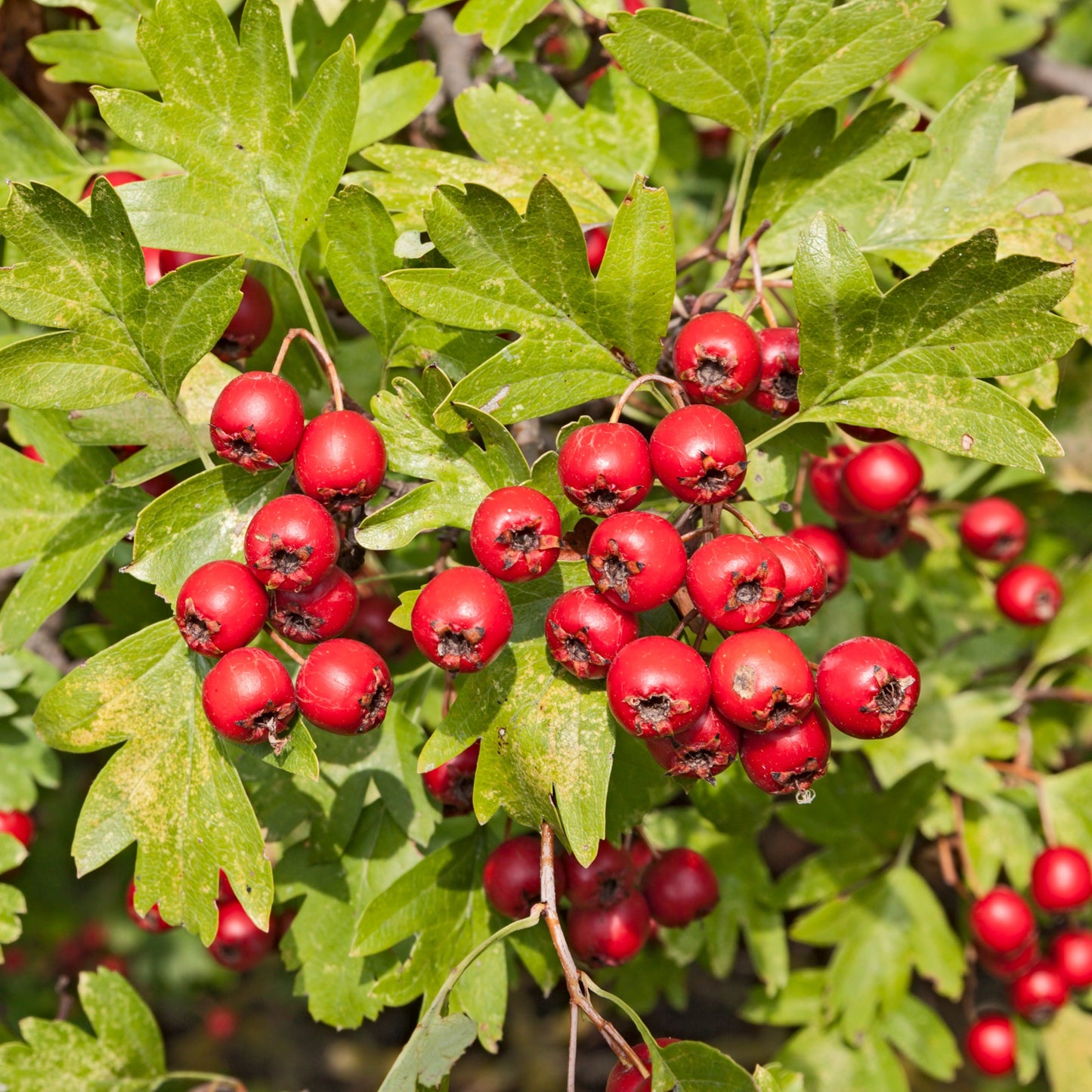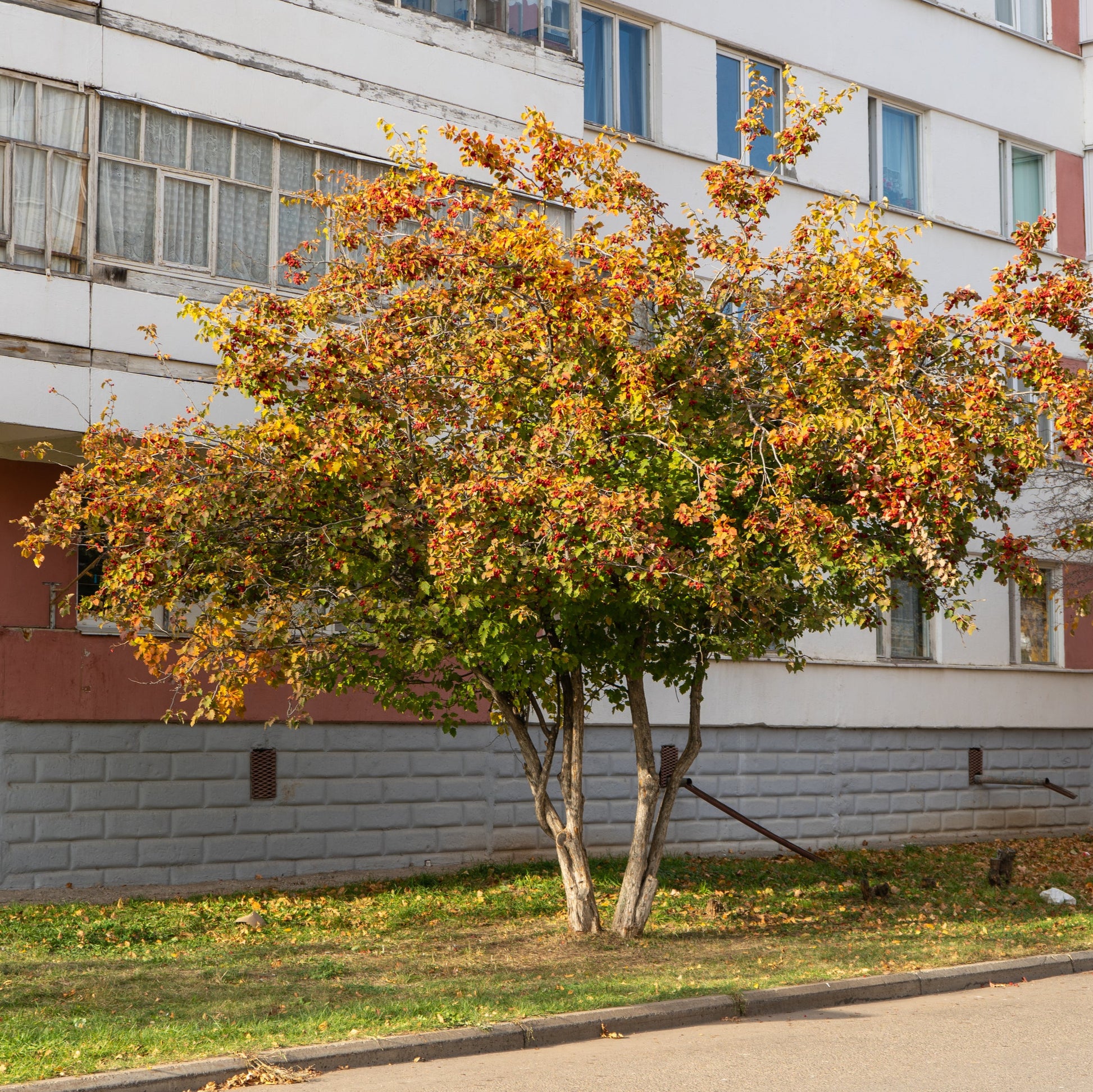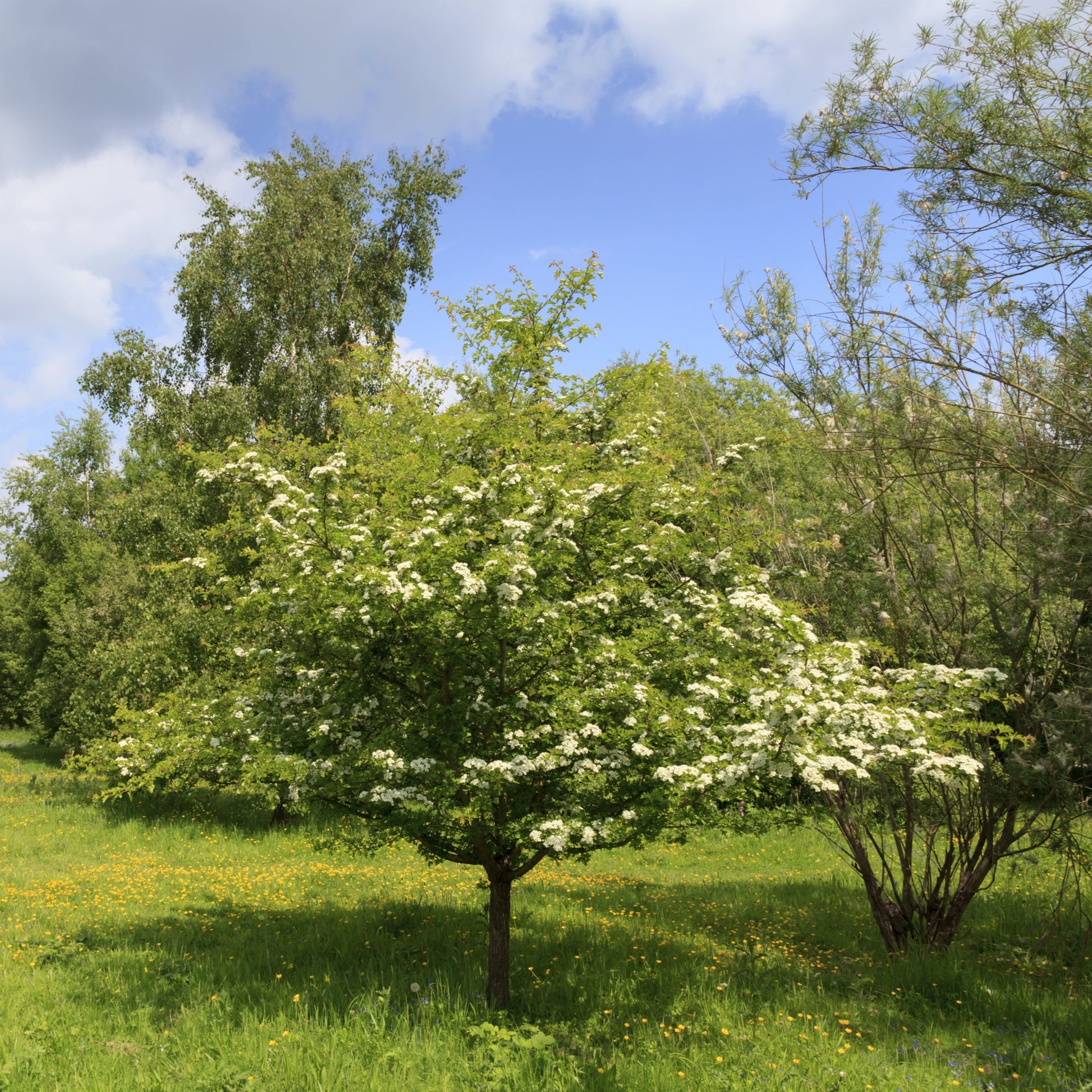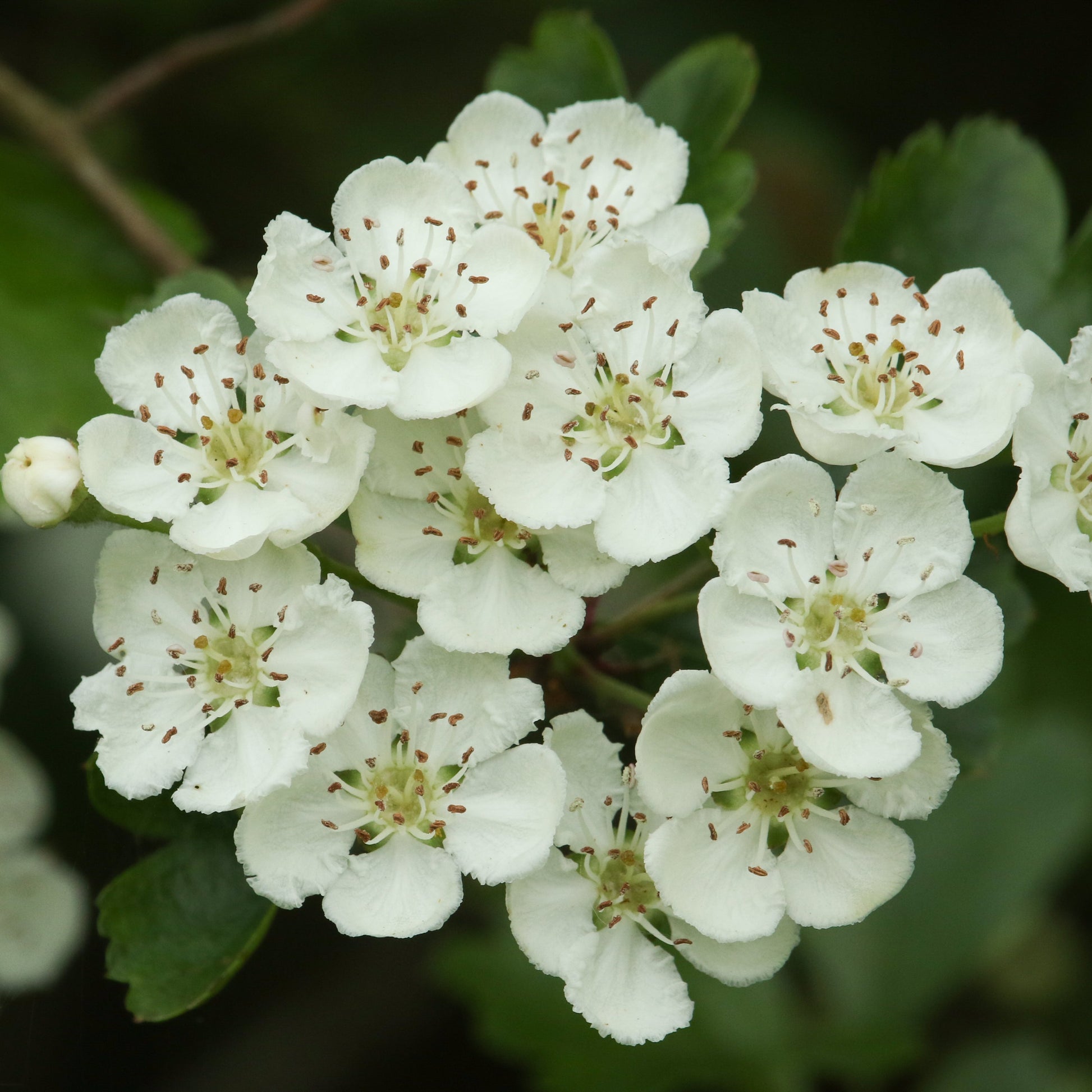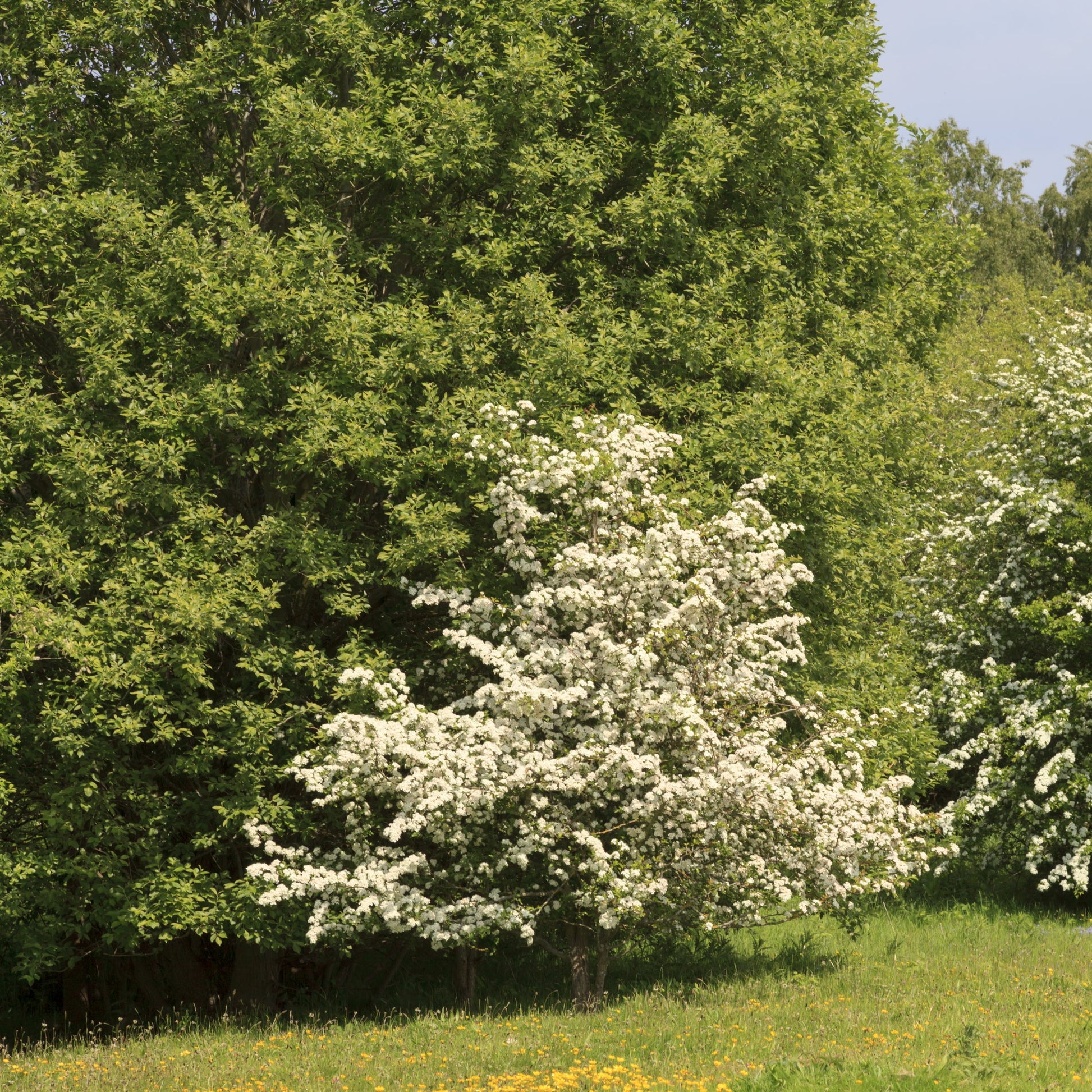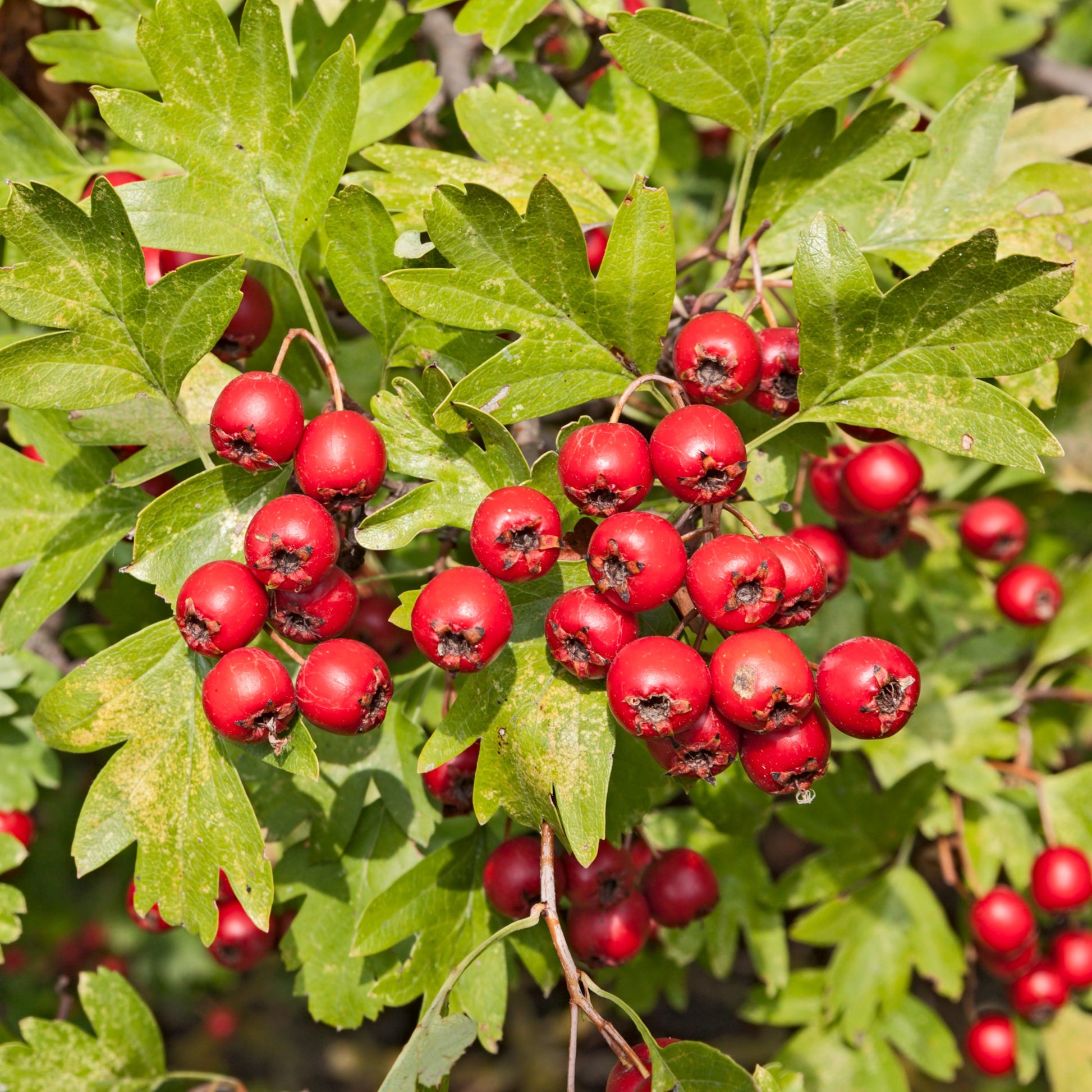Limited Quantities - Reserve Now For Fall
Washington Hawthorn Tree
Washington Hawthorn Tree
Couldn't load pickup availability
Crataegus phaenopyrum
The Washington Hawthorn Tree is a hardy, ornamental deciduous tree known for its showy white spring flowers, bright red berries, and vibrant fall foliage. This small to medium-sized tree is highly valued for its wildlife benefits, adaptability, and year-round beauty. With excellent disease resistance, drought tolerance, and ability to thrive in various soil conditions, the Washington Hawthorn is a perfect choice for urban landscapes, wildlife gardens, and decorative plantings.
Washington Hawthorn Tree
| Attribute | Details |
|---|---|
| Variety | Rooted |
| Botanical Name | Crataegus phaenopyrum |
| Common Names | Washington Hawthorn, Thornapple, Scarlet Hawthorn |
| Mature Height | 20-30 feet |
| Mature Width | 20-25 feet |
| Growth Rate | Moderate to Fast (1.5-2 feet per year) |
| Lifespan | 50-150 years |
| USDA Hardiness Zones | 4-8 |
| Sun Preference | Full sun (6+ hours of direct sunlight) |
| Soil Type | Well-drained, loamy, sandy, or clay soils |
| Soil pH | Slightly acidic to neutral (5.5-7.5) |
| Water Needs | Low to moderate; drought-tolerant once established |
| Flowering Season | Late spring to early summer (May-June) |
| Flower Color | White, fragrant clusters |
| Fruit | Small, bright red berries (fall to winter) |
| Fall Foliage | Orange, red, and purple hues |
| Wildlife Attraction | Birds, bees, butterflies, deer, small mammals |
| Growth Habit | Rounded, dense canopy with thorny branches |
| Self-Pollinating? | Yes |
| Landscape Uses | Ornamental tree, wildlife habitat, privacy hedge, erosion control, urban planting |
| Maintenance Level | Low to moderate |
Environmental Benefits
🐝 Pollinator Haven – Produces nectar-rich flowers that attract bees, butterflies, and hummingbirds, supporting local ecosystems.
🦜 Wildlife Shelter & Food Source – Provides berries that persist into winter, feeding birds and small mammals while its dense canopy offers shelter.
🌳 Air Purification & Urban Resilience – Absorbs pollutants and carbon dioxide, thriving in urban and suburban environments.
🌱 Erosion Control & Soil Stabilization – Strong root system helps prevent soil erosion, making it a great choice for stabilizing slopes and riverbanks.
Pros & Cons
| Pros | Cons |
|---|---|
| Attractive year-round with flowers, berries, and fall foliage | Thorns on branches can make handling and pruning difficult |
| Tolerant of drought, pollution, and urban conditions | Small fruit may create litter if planted near patios or sidewalks |
| Provides food and shelter for birds and pollinators | May require occasional pruning to maintain shape and remove dead branches |
| Hardy and disease-resistant compared to other Hawthorns | Susceptible to cedar rust if planted near junipers |
| Great for privacy screening and windbreaks | Thorns may not be ideal for high-traffic areas or near children’s play spaces |
Planting & Care Guide (Bare Root)
- Spacing: Plant 15-25 feet apart for a natural canopy or 8-12 feet apart for a dense hedge
- Soaking: Soak bare root in water for 6-12 hours before planting
- Planting Depth: Dig a hole twice the width of the root system, ensuring roots are level with the soil surface
- Mulching: Apply a 2-3 inch layer of mulch to retain moisture and suppress weeds
- Pruning: Prune in late winter or early spring to shape the tree and remove deadwood
- Fertilization: Apply a balanced fertilizer in early spring to encourage healthy growth and flowering
- Watering: Water deeply 2-3 times per week during the first year, then reduce as the tree matures
The Washington Hawthorn Tree is a beautiful, low-maintenance, and highly beneficial tree that adds seasonal interest, wildlife support, and ornamental beauty to any landscape. Whether planted for privacy, erosion control, or as a striking ornamental specimen, this hardy and long-lived tree is an excellent addition to any outdoor space.
Share
